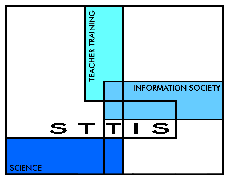Workshop 1
 Contents Contents
|
Section B Learning about the innovation
Activity
B2 Energy transfers |
|
Aims
-
To apply the idea of ‘energy transfer’ to a variety
of phenomena.
-
To consider some of the difficulties raised by this
approach to teaching about energy.
Background
Much debate has taken place about ways of teaching
about energy, and many people have argued that teaching about ‘energy transfer’
rather than ‘forms of energy’ is more useful and scientifically appropriate.
Although the ‘forms of energy’ approach to teaching about energy is popular,
the National Curriculum has never referred to it in any of its various
versions since it was first introduced, though it does refer explicitly
to the idea of energy transfer. Thus, the 2000 version states, for example,
that in KS3, pupils should be taught:
-
5d the distinction between temperature and
heat, and that differences in temperature can lead to transfer of energy
-
5e ways in which energy can be usefully transferred
and stored
At KS4, pupils should be taught, for example:
-
5a how insulation is used to reduce transfer
of energy from hotter to colder objects
-
5d to calculate power in terms of the rate
of working or of transferring energy
In this approach, then, energy should be thought
of as ‘staying the same kind of thing’ while it travels or is transferred
from one place to another. Energy can be stored in objects, for example,
an object has more energy stored in it when it is hot than when it is cold,
and an object has more energy stored in it when it is moving than when
it is still. Springs have more energy in them when they are stretched.
Energy can be transferred in a number of ways, for example by a pulley
system, by an electrical current, or by radiation.
In this activity you will first look at an energy
circus from an ‘energy transfer’ point of view as if you were a pupil doing
the activity, writing how energy is transferred. You will then begin to
consider some of the difficulties with the approach.
What to do
1. The table on page
2 shows some apparatus commonly used in an ‘energy circus’. Look at
the questions on this sheet and write the answers on the table.
2. Which of the changes seemed easy to describe
in terms of energy transfer? Which seemed more difficult? Why do you think
that some changes seem easier to describe than others?
3. The National Curriculum uses the term
‘energy transfer’. So, we could talk of energy being transferred from a
hot cup of water to the surrounding air. Which of these others terms could
be used appropriately with pupils?
-
The energy goes from the water to the air.
-
The energy travels from the water to the air.
-
The energy flows from the water to the air.
-
Some of the energy that is in the water ends up in
the air.
-
The energy spreads out from the water from the air.
|

 Teaching about energy
Teaching about energy

